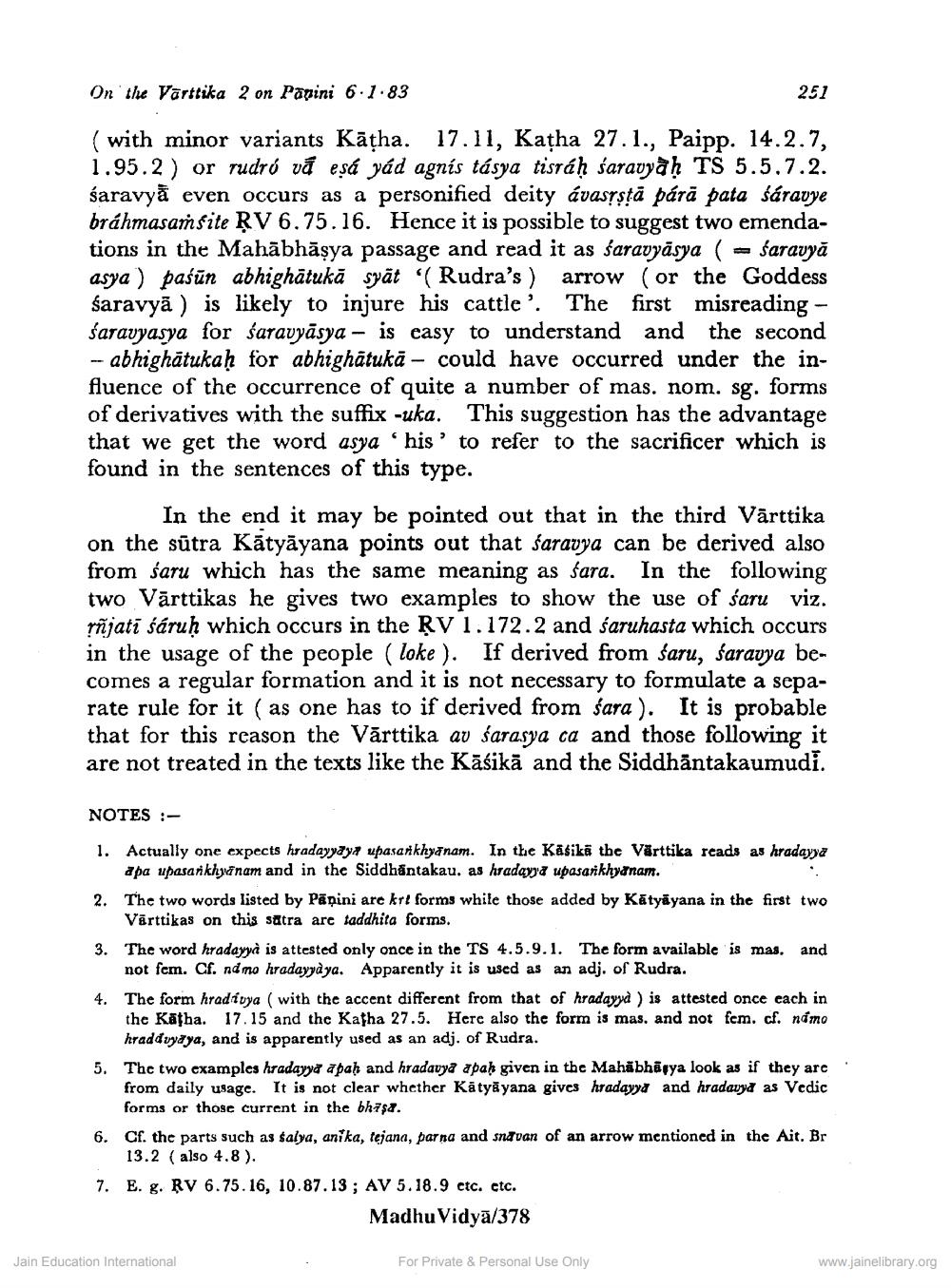________________
On the Varttika 2 on Papini 6.1.83
251
(with minor variants Kāțha. 17.11, Katha 27.1., Paipp. 14.2.7, 1.95.2) or rudró vă eşá yád agnís tásya tisráḥ śaravyāḥ TS 5.5.7.2. śaravyă even occurs as a personified deity kvasystā párā pata śáravye brahmasaṁsite RV 6.75.16. Hence it is possible to suggest two emendations in the Mahābhāsya passage and read it as śaravyäsya ( - śaravyā asya ) paśūn abhighātukā syāt '(Rudra's ) arrow (or the Goddess śaravyā ) is likely to injure his cattle'. The first misreading - saravyasya for śaravyāsya - is easy to understand and the second -- abhighātukaḥ for abhighātukā – could have occurred under the influence of the occurrence of quite a number of mas. nom. sg. forms of derivatives with the suffix -uka. This suggestion has the advantage that we get the word asya his' to refer to the sacrificer which is found in the sentences of this type.
In the end it may be pointed out that in the third Vārttika on the sūtra Kātyāyana points out that saravya can be derived also from saru which has the same meaning as śara. In the following two Vārttikas he gives two examples to show the use of saru viz. rñjati sáruh which occurs in the RV1.172.2 and saruhasta which occurs in the usage of the people (loke ). If derived from śaru, baravya becomes a regular formation and it is not necessary to formulate a separate rule for it (as one has to if derived from sara ). It is probable that for this reason the Vārttika av sarasya ca and those following it are not treated in the texts like the Kāśikā and the Siddhantakaumudi.
NOTES :
1. Actually one expects hradayyaya upasankhyanam. In the Kasika the Vārttika reads as hradayya
apa upasankhyanam and in the Siddhantakau. as hradaya upasarkhyanam. 2. The two words listed by Panini arc krt forms while those added by Katyāyana in the first two
Värttikas on this satra are taddhita forms. 3. The word hradayyà is attested only once in the TS 4.5.9.1. The form available is mas, and
not fem. Cf. nd no hradayya ya. Apparently it is used as an adj. of Rudra. 4. The form hradí vya (with the accent different from that of hradayd ) is attested once each in
the Katha. 17.15 and the Katha 27.5. Here also the form is mas. and not fem. cf. nomo
hraddvydya, and is apparently used as an adj. of Rudra. 5. The two examples hradayya apah and hradavya apah given in the Mahābhārya look as if they are.
from daily usage. It is not clear whether Kätyāyana gives hradayya and hradawyd as Vedic
forms or those current in the bh7$4. 6. Cf. the parts such as salya, anika, tejana, parna and snd van of an arrow mentioned in the Ait. Br
13.2 (also 4.8). 7. E. g. RV 6.75.16, 10.87.13 ; AV 5.18.9 ctc. etc.
Madhu Vidyā/378
Jain Education International
For Private & Personal Use Only
www.jainelibrary.org




